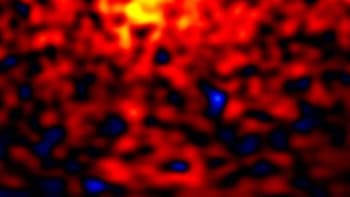
The LIGO–Virgo–KAGRA collaboration has announced that the search for gravitational waves will resume in May. The next observational run – the project’s fourth – was meant to start last year but was postponed due to a series of engineering delays resulting from the COVID-19 pandemic. The run will be the longest to date, operating for 18 months.
Gravitational-wave detectors are L-shaped interferometers with arms several kilometres long. Laser beams are sent down each arm and then bounce off mirrors, called test masses. The beams are then recombined at the centre of the interferometer producing an interference pattern that cancels out when perfectly aligned. The instruments are thus sensitive to minute changes in length caused by any passing gravitational waves.
LIGO has been a huge success, spotting its first gravitational wave in 2016 from a binary black-hole merger. Since then another 92 detections have been made over three observational runs. Observational run 3 was supposed to last 12 months until the end of April 2020 but ended on 27 March 2020 when the pandemic started.
The LIGO and Virgo detectors then underwent a series of sensitivity improvements, which included ways to suppress “quantum noise” in the detector. “[This] limits the sensitivity of the gravitational-wave detectors both at low frequency, in the form of radiation pressure noise, and at high frequency, in the form of photon counting noise,” says Alessandro Bertolini from the Nikhef institute in Amsterdam, who works on detector development.
The upgrades are expected to double the sensitivity of the detectors to neutron star mergers. Whereas gravitational waves were detected almost every week in the previous observational run, such events should now be picked up every day.
Three’s a crowd
As well as featuring Virgo and LIGO, Japan’s KAGRA detector will also join the upcoming run. KAGRA, which is located under a mountain in central Japan, became operational in 2019 and joined the previous run in February 2020 before it was cut short due to the pandemic.
While KAGRA is currently poorer than Virgo and LIGO at detecting gravitational waves, its sensitivity will also soon improve thanks to detector upgrades. KAGRA will operate for one month in the upcoming run before being shutdown for improvements. It is hoped that KAGRA will re-join observations for at least three months next year. Rainer Weiss: 50 years of LIGO and gravitational waves
“We hope to realize our first detection by the end of the coming run,” KAGRA spokesperson Jun’ichi Yokoyama from the University of Tokyo told Physics World. “How much our participation will contribute to the science obtained by the entire network depends crucially on the sensitivity we will achieve by the end of the run, which is difficult to answer at this point.”
After the fourth run, the LIGO and Virgo detectors are expected to undergo further upgrades, particularly to the coatings used on the mirrors. “The new coatings are currently still in a development phase,” says Bertolini. “[The upcoming] run will allow the scientific output to be increased while the coating design is finalized, and the new test masses are prepared for the following run.” The new coating is expected to be ready for the fifth observational run, which begins in 2026.



